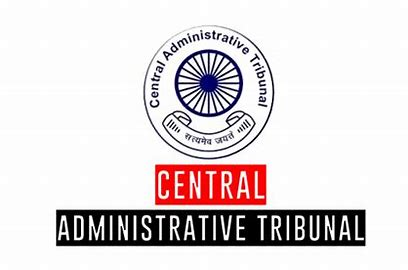Description

Copyright infringement not intended
In News
- The Union minister of Personnel, Public Grievances and Pensions has stated that the Central Administrative Tribunal (CAT) has attained a disposal rate of more than 91% in five years.
- A higher disposal rate was achieved from 2015 to 2019; it was around 89% from 2010 to 2014.
- He mentioned that the Union government is committed to promoting transparency and justice for all.
About Tribunals
- The original Constitution did not contain provisions with respect to tribunals.
- The 42nd Amendment Act of 1976 added a new Part XIV-A to the Constitution. This part is entitled ‘Tribunals’ and consists of only two Articles;
- Article 323 A: Dealing with administrative tribunals.
- Article 323 B: Dealing with tribunals for other matters.
- Administrative Tribunals: Article 323 A empowers the Parliament to provide for the establishment of administrative tribunals for the adjudication of disputes relating to recruitment and conditions of service of persons appointed to public services of the Center, the states, local bodies, public corporations and other public authorities.
- Under Article 323 A, the Parliament passed the Administrative Tribunals Act in 1985. The act authorizes the Central government to establish one Central Administrative Tribunal (CAT) and the State Administrative Tribunals (SAT).
- The CAT exercises original jurisdiction in relation to recruitment and all service matters of public servants covered by it. Its jurisdiction extends to the all-India services, the Central civil services, civil posts under the Center and civilian employees of defence services. However, the members of the defence forces, officers and servants of the
- State Administrative Tribunals: The Administrative Tribunals Act of 1985 empowers the Central government to establish the State Administrative Tribunals (SATs) at a specific request of the concerned state governments.
- The SATs exercise original jurisdiction in relation to recruitment and all service matters of state government employees.
- Tribunals function as a parallel mechanism to the traditional court system.
- Tribunals were established for two main reasons:
- Allowing for specialized subject knowledge in disputes on technical matters.
- Reducing the burden on the court system.
- The Finance Act, of 2017 reorganized the Indian tribunal system to ensure uniformity in their administration by merging certain tribunals based on the similarity in their functional domain.
- The 2017 Act also empowered the central government to make Rules to provide for the qualifications, appointments, term of office, salaries and allowances, removal, and other conditions of service for chairpersons and members of these tribunals.
- The Tribunals Reforms Act 2021 abolishes nine existing appellate bodies and transfers their functions mainly to high courts.
- The 2021 Act also amends the Finance Act, of 2017, to bring certain provisions (such as qualifications, appointments, term of office, salaries and allowances of tribunal members) under the purview of the 2021 Act.

Key points of Tribunal Reforms Act 2021
- The Act dissolved certain existing appellate bodies and transferred their functions (such as adjudication of appeals) to other existing judicial bodies.
- Provisions on the composition of selection committees and terms of office have been included in the Act.
- Qualification of members and other terms and conditions of service will be notified by the central government.
- The Chairperson and Members of the Tribunals will be appointed by the central government on the recommendation of a Search-cum-Selection Committee. The Committee will consist of:
- The Chief Justice of India, or a Supreme Court Judge nominated by him, as the Chairperson (with casting vote),
- 2 Secretaries nominated by the central government,
- The sitting or outgoing Chairperson or a retired Supreme Court Judge, or a retired Chief Justice of a High Court,
- The Secretary of the Ministry under which the Tribunal is constituted (with no voting right).
- State administrative tribunals will have separate search-cum-selection committees. These Committees will consist of:
- The Chief Justice of the High Court of the concerned state, as the Chairman (with a casting vote),
- The Chief Secretary of the state government and the Chairman of the Public Service Commission of the concerned state,
- The sitting or outgoing Chairperson, or a retired High Court Judge,
- The Secretary or Principal Secretary of the state’s general administrative department (with no voting right).
- The central government must decide on the recommendations of selection committees preferably within three months from the date of the recommendation.
- The Act provides for a 4-year term of office (subject to the upper age limit of 70 years for the Chairperson, and 67 years for members). Further, it specifies a minimum age requirement of 50 years for the appointment of a chairperson or a member
Concerns
- The existence of a large number of vacancies for Members and Chairpersons and the delay caused in filling them up has resulted in a weakening of the tribunals.
- The dissolution of certain tribunals and appellate bodies and the transfer of their functions to High Courts can be criticized on the grounds that Indian courts are already overburdened with their existing caseload.
https://www.business-standard.com/article/current-affairs/cat-achieved-91-disposal-rate-in-5-years-more-than-upa-s-rule-jitendra-122080601059_1.html
https://t.me/+hJqMV1O0se03Njk9













